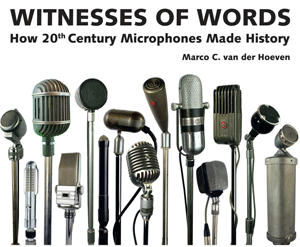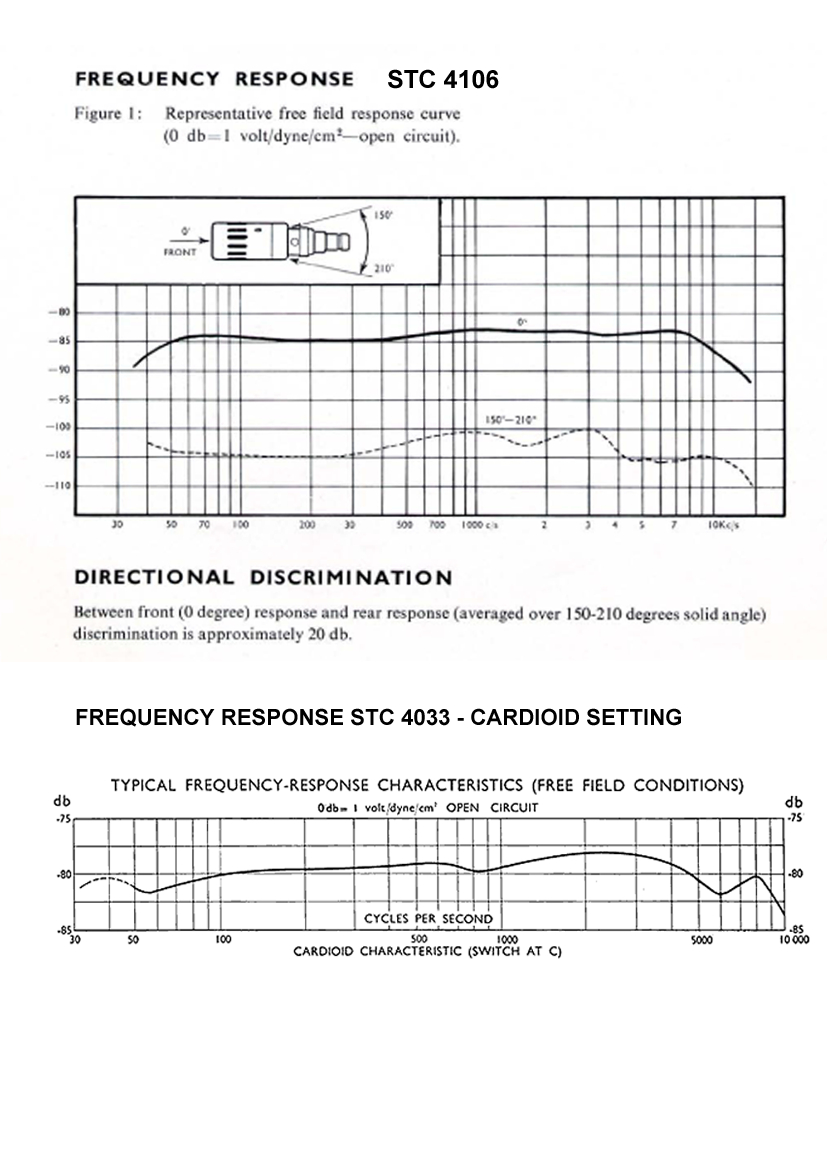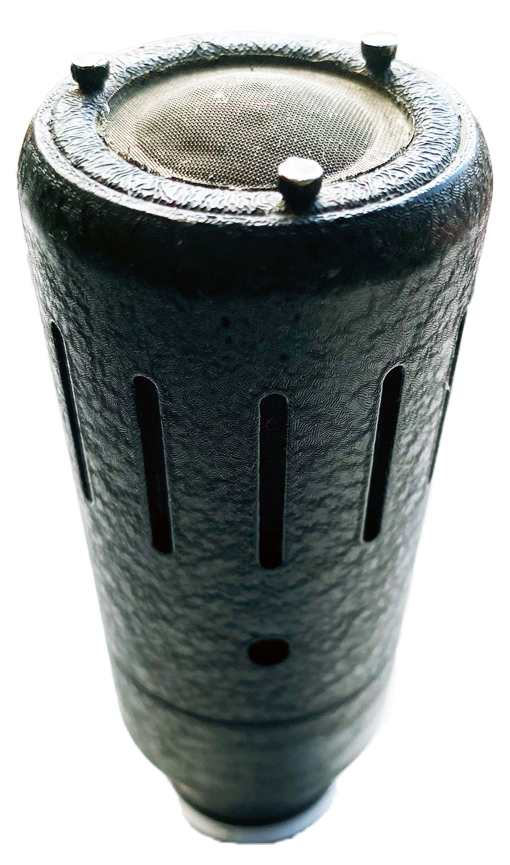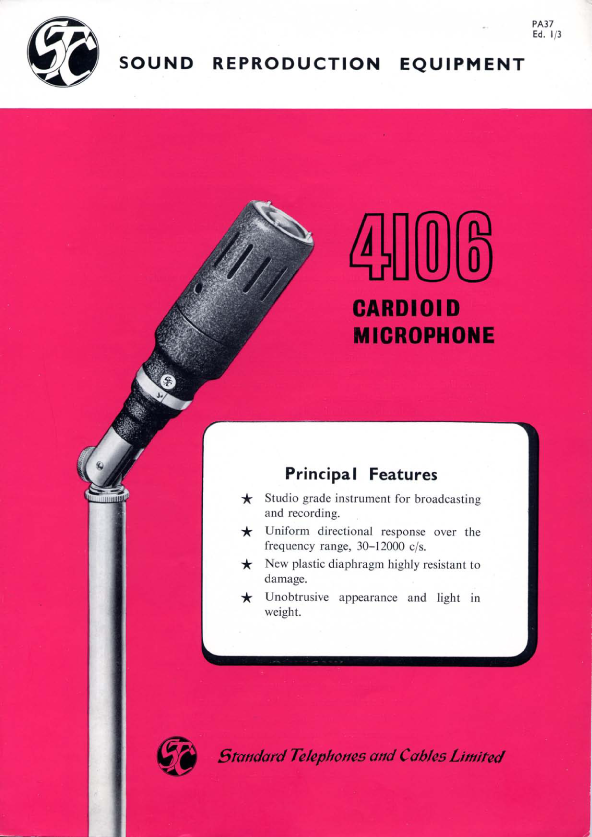|
The Standard Telephone and Cables type 4106, from 1961, is by far the best sounding dynamic cardioid the company ever produced.
Intended as studio microphone for speech and music, the sound it delivered was very smooth; its performance was made to match that of the STC 4033, the UK version of the Western Electric 639A, which combined the output of a ribbon and a dynamic capsule.
Compared to the size of the 4033, the new 4106 was incredibly small, just 11,7 cm long with a diameter of only 4 cm.
Anyone would think that the BBC would be delighted with this latest STC dynamic, they used lots of the bulky 4033's, but somehow it never caught on. I have not been able to find a single image of a 4106 in use by the BBC, nor in fact anywhere else.
All other STC microphone models were widely used, so what made this one the exception?
The price was pretty high for those days: £49 (the ad shows the 4038 ribbon was cheaper), the established 4105 was simpeler, but perhaps good enough, and definitely better looking.
The 4106's interior acoustic phase shifting network was cleverly designed, but for the outside STC had combined some of the looks of their earlier 4037 and 4105 with disastrous results.
The amazingly ugly design must have contributed to it failing to impress potential users. AKG had brought out their attractive D19 and D24 dynamics, in 1956, Sennheiser had shook the world in 1960 with their MD 421, so the sixties were no time to present such an outdated shape.
How many 4106 microphones were ever made, I have no idea, but it seems the production did not last very long and, when Coles took over from STC, this type was discontinued.
If you ever find one, only the looks will disappoint you.
These and many more types feature in my book Witnesses of Words. More information about that can be found at www.witnessesofwords.com

|
|
|
|
|

|
Top: STC 4106 on table stand
Middle: 4106 up close & STC ad from 1961
Below: Sound, Frequency plots of 4106,
and 4033 & 4106 Brochure |
|
 |
|
|


 Video's
Video's Contact
Contact






